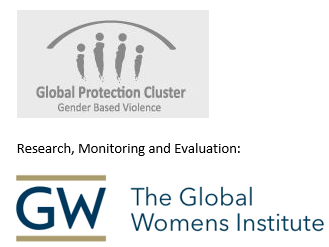- In addition to the IASC GBV Guidelines and IRC’s ERPI framework, it is critical that VAWG programmers working in humanitarian settings consider programming strategies with a view to long-term impact. Very often in emergencies programming is designed to fill immediate gaps, without due consideration to longer-term goals. Having a comprehensive framework in mind (one that moves beyond the early response phase to articulate priorities and goals for transitional and development phases) can assist field workers to develop more sustainable approaches to programming, and can also assist in framing national action plans, coordination strategies, proposals for the CAPs and other funding mechanisms, and advocacy to donors for on-going support to programming.
- The essence of the strategic framework presented below is that addressing VAWG requires coordinated, inter-agency, and multi-sectoral strategies that 1) facilitate policy reform and implementation of protective legislation; 2) build the capacity of health, psychosocial, legal/justice and security systems to recognize, monitor, and respond to VAWG; and 3) ensure rapid and respectful services to survivors.
- Addressing VAWG also involves the encouragement of fundamental social change that supports women’s human rights as well their equal participation in economic and social development, both in conflict-affected situations and in peacetime. Thus, while all interventions should be designed with sensitivity and respect for culture and tradition, promoting and protecting women’s rights will invariably involve challenging the normative social values that promote VAWG. If the structural causes of violence are to be addressed in a lasting way, women and girls--who in the past may have had little share of the public sphere--must be given the support to be active agents in all efforts to protect and advance their rights (Read-Hamilton, ).
